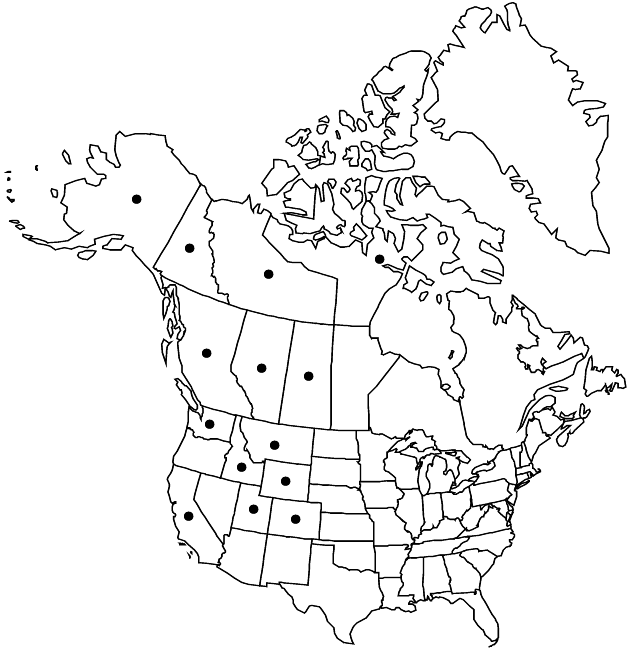Artemisia borealis
Reise Russ. Reich. 3: 755. 1776.
Perennials, (6–)8–20(–40) cm (cespitose), mildly aromatic; taprooted, caudices branched. Stems (1–)2–5, gray-green, tomentose. Leaves persistent, basal rosettes persistent, gray-green to white; blades ovate, 2–4 × 0.5–1 cm, 2–3-pinnately or -ternately lobed, lobes linear to narrowly oblong, apices acute, faces moderately to densely sericeous. Heads (proximal sessile, distal pedunculate) in (leafy) spiciform arrays 4–9(–12) × (0.5–)1–5 cm. Involucres hemispheric, 3–4 × 3.5–4 mm. Phyllaries (obscurely scarious) densely tomentose-villous. Florets: pistillate 8–10; functionally staminate 15–30; corollas (or lobes) yellow-orange or deep red, 2.2–3.5. Cypselae oblong-lanceoloid, somewhat compressed, 0.4–1 mm, faintly nerved, glabrous.
Distribution

w North America, especially at high elevations and northern latitudes, Eurasia.
Discussion
Subspecies 2 (2 in the flora).
Selected References
None.
Key
| 1 | Herbage villoso-tomentose, glabrate, or glabrous; corollas (at least lobes) usually yellow-orange, 2.2–3 mm; mountains, w North America | Artemisia borealis subsp. borealis |
| 1 | Herbage white-hoary; corollas (at least lobes) deep red, 3–3.5 mm; w arctic North America | Artemisia borealis subsp. richardsoniana |